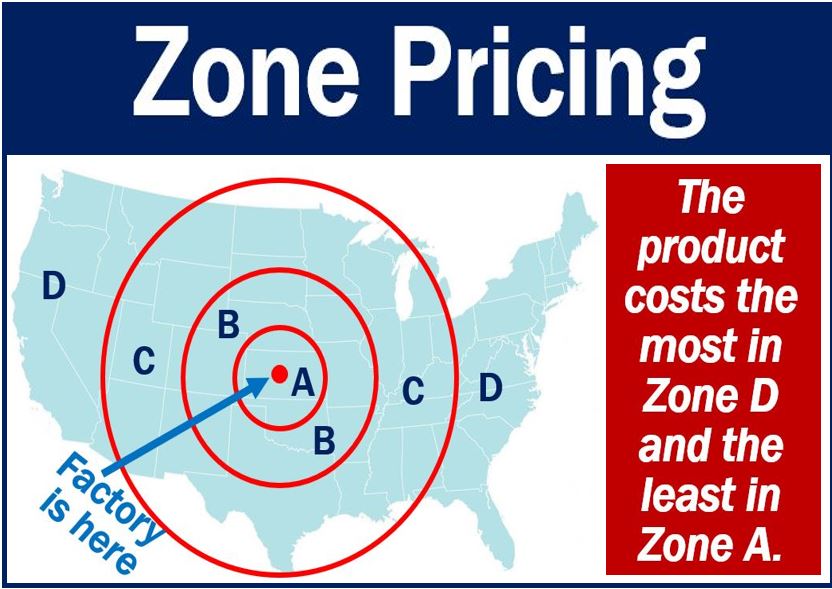Zone pricing is the process of establishing prices for products and services depending on where people buy them. If a consumer buys something in Zone A and then the same thing in Zone B, they may have to pay different prices.
A company may use a zone pricing system to pay for transportation costs. In other words, something may cost more the further away it is from where it was made.
Put simply, zone pricing is a strategy where a company charges the same price to all customers or distributors within a certain area, or “zone.”
However, if the customer is located farther away from where the product is made, the price is usually higher to help cover extra transportation costs. So, the farther the product has to travel, the more it might cost.
Freight charges
If sellers pay the freight charges, they will want to recover that cost. Therefore, they charge customers that are far away more than the ones that are near.

Zone pricing – example
Let’s imagine an office furniture manufacturer in Mexico ships its products into the USA.
It might divide its next door neighbor into four zones. It bills customers in different zones different amounts.
Therefore, a customer in Texas probably pays less than one in New England.
Concentric circles or irregular shapes
The company that adopts a zone pricing system may draw concentric circles on a map. Its manufacturing plant or warehouse is at the center. Each circle defines the boundary of a price zone.
Some companies, on the other hand, may use irregularly-shaped price boundaries. Geographical areas have different population densities, transportation infrastructure, and freight costs.
Zone prices – market forces
The term may also refer to the practice of establishing prices that reflect local competitive conditions. In other words, those that reflect market forces.
The term ‘market forces’ refers to the forces of supply and demand.
Zone pricing is a strategy used by gas stations, especially in the US, where the price of gasoline changes depending on the area.
Instead of having one flat price everywhere, companies look at a bunch of factors, like how many other gas stations are nearby, how much traffic passes through, how many people live in the area, and even geographic details. The exact formula is usually kept secret, but the goal is to set prices based on what people in that specific zone are likely to pay.
